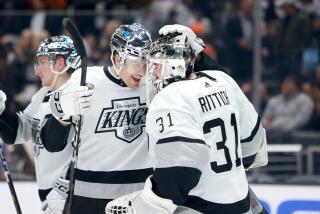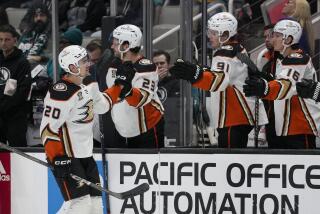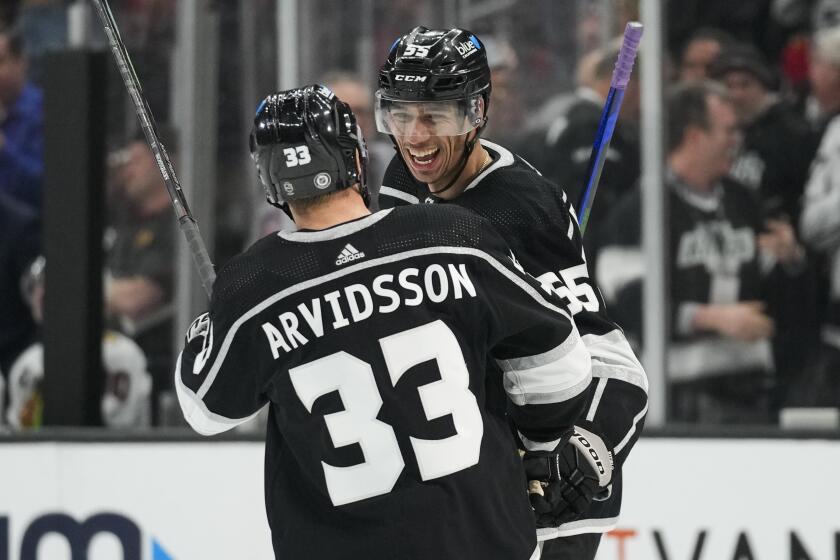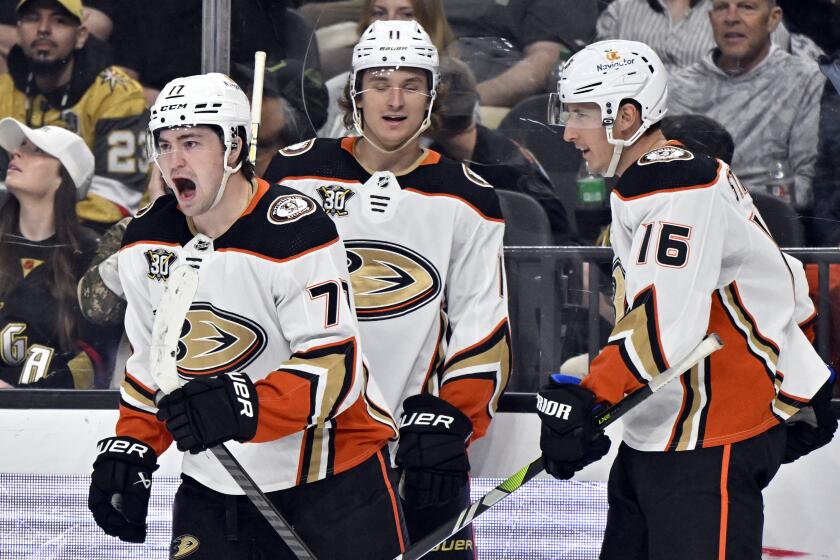What we learned from the Ducks’ 6-2 loss to the San Jose Sharks

The Ducks started off their five-game homestand with victories over the Pittsburgh Penguins and Kings, but a 6-2 loss to the San Jose Sharks on Sunday ended those winning ways. Despite the lopsided score, there were positives to take away. Here’s what we learned:
Rickard Rakell and Ryan Getzlaf continue to dominate
The top-line duo has been a force to reckon with in pretty much every game since the captain returned in December from a fractured cheekbone. They both generated four shots and each produced multipoint nights (goal and assist a piece). Rakell had a breakaway early, but couldn’t finish.
Coach Randy Carlyle shook things up late in the game, elevating Ondrej Kase to the right wing on the No. 1 line and shifting Corey Perry down to third line. It remains to be seen if that’s a harbinger of things to come, but one thing’s for sure, he’s not splitting up Rakell and Getzlaf.
John Gibson turns in one of worst performances of season
Sure, the Ducks did their starting goalie no favors with the number of odd-man rushes and man-advantage opportunities the Sharks were afforded, but Gibson usually makes plenty of tough saves.
He let up five goals on just 22 shots, and after Mikkel Boedker’s second of the night, Carlyle pulled Gibson and inserted Ryan Miller for mop-up dirty. The veteran didn’t fare much better, with one goal allowed on four shots.
Andrew Cogliano back, but second line disappointing
The unit accounted for just six of the Ducks’ 35 shots, and Ryan Kesler and Jakob Silfverberg, in particular, had off nights. Kesler, the team’s best defensive forward, was on the ice for six shot attempts during five-on-five play, but the Sharks generated 11 during that time.
Silfverberg didn’t fare much better, with a minus-four differential in shot attempts. Compare that to fourth-line winger J.T. Brown, whose presence on the ice accounted for 16 shot attempts but just two the other way.
More to Read
Go beyond the scoreboard
Get the latest on L.A.'s teams in the daily Sports Report newsletter.
You may occasionally receive promotional content from the Los Angeles Times.






